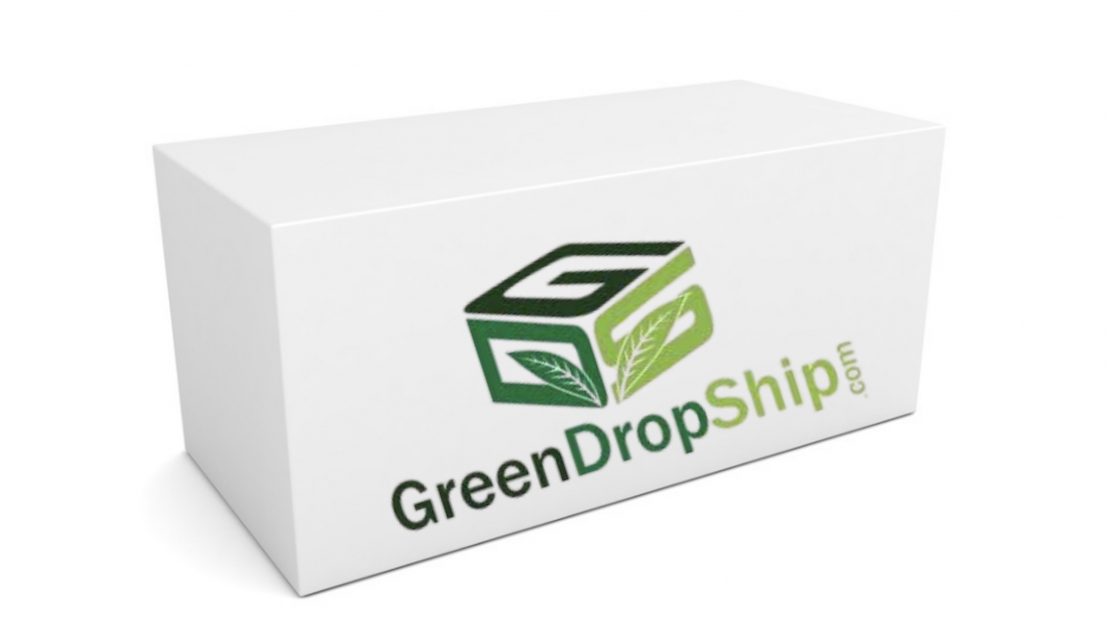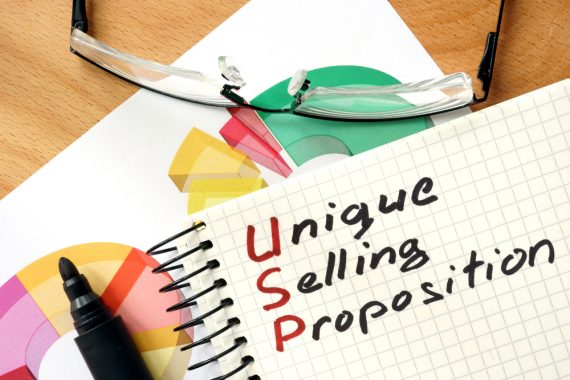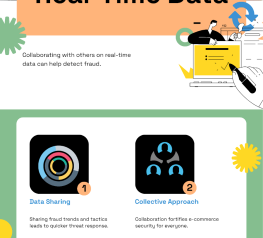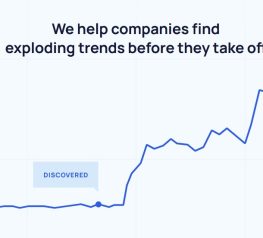How To Develop An eCommerce Unique Selling Proposition (USP)
Quick, if someone were to ask how do you define your eCommerce brand’s unique selling proposition…would you have an answer? If you’re an online entrepreneur, we hope you respond immediately with an enthusiastic “YES!”
Being able to clearly state what makes your brand stand out in a sea of competitors is crucial. It’s also something that shouldn’t be taken lightly, meaning if you’re not there yet… that’s okay. Anything worth doing, is worth taking the time to do well. Crafting a solid USP definitely falls into this category.
So if you’re not entirely sure what a unique selling proposition is, or how to develop one for your ecommerce business, stick with us. We’ll explain what makes a good USP and break down the process for you to write one of your own.
What Is A Unique Selling Proposition?
A unique selling proposition (or selling point), more commonly referred to as a USP, is that one special thing that makes your brand stand out above the competition. Simply put, a USP defines what you offer, that other eCommerce businesses in your market do not.
Developing a USP is a critical foundational step for building a successful online store. When you take the time to create a strong and deliberate USP, it helps focus your marketing strategy and influences pretty much everything; from your online inventory, to your product descriptions, messaging, branding, copywriting, and more.
At its core, a unique selling proposition should quickly answer a potential customer’s most immediate question when they encounter your brand: “What makes you different from the competition?”
And in the highly competitive eCommerce space, just being ‘unique’ likely isn’t enough. You also need to have a really good understanding of who your ideal customer is, and differentiate your brand around something your target audience cares about. Otherwise, your marketing won’t be as successful.
Don’t think about your USP in terms of casting a wide net, think of it more like laser targeting with a scope. It will take time to whittle down your ideas into a focused statement that helps your brand carve out a space relatively untouched by the competition.
But once you understand what makes your eCommerce brand special, you can do more than just increase traffic. You can use your USP to build a loyal customer following, and create the best possible experience for your engaged fans.

What A USP Is Not
A unique selling proposition is NOT a marketing offer or business practice. So things like free shipping, 15% off new orders, or a 30-day money back guarantee are not USPs.
These can be effective marketing messages, and they can tie into your USP, but they aren’t unique enough to stand on their own. Plus, any competitor could easily copy any one of these marketing tactics, and some likely already do.
A USP is not a generic stance in the marketplace. So things like “premium quality foods” or “cutest baby clothes” aren’t specific enough to qualify. Plus, seriously, how many times do you hear other people saying the same thing? If you’ve heard it plenty of times before, it’s not a USP.
A unique selling point is also not the header copy on your website, or a basic brand slogan. It’s much more than that.
Your unique selling proposition is a statement that embodies EVERYTHING you do as a business to differentiate yourself from your competitors. Your USP is how you approach running your business. It impacts the products you offer, the content you provide, your customer experience, and every other touch point your customers have with your brand.
Why You Need A USP For Your eCommerce Store
A unique selling proposition defines your eCommerce store’s special position in the marketplace.
Dropshippers have to take their USP game even one step further. While you can choose the unique combination of products you offer online, you won’t have any input into the actual product design. Plus there are likely other resellers who are offering some of the same items you are. Your USP will need to tell potential customers why they should buy from you, and not from one of the other guys.
If you don’t establish a dropshipping USP upfront, you lose focus. Without a unique way to frame your products, you won’t be able to compete in a crowded market. There’s no spark, no buzz, no way to grab attention and connect with potential customers. Basically it’s the death of any eCommerce site.
Having a USP is a competitive advantage that avoids the entrepreneurial trap of trying to please everyone. Because let me tell you, you cannot be all things to all people. However, you can be the solution to a problem needed specifically by YOUR people.
Keep in mind that as an eCommerce entrepreneur, you’re not just competing with other store owners. You’re competing with the entire ecommerce industry.
According to PipeCandy, a data-based analytics company, there are about 1.3 million ecommerce companies currently operating in the United States and Canada. Talk about competition!
Many eCommerce entrepreneurs try to jump on the bandwagon without a USP and end up building a store that looks just like everyone else’s. They use a default theme, which is lazy and unnecessary when there are so many custom Shopify themes available. Then they don’t bother adding any personality to their brand, and wonder why shoppers don’t buy.
Bottom line: If you want to be successful, you must stand out from the crowd. For dropshippers, that means standing out for more than just the products you carry.
How can YOU solve your ideal customer’s problem in a way that no one else can? That’s the power of a unique selling proposition.
You only have 7 seconds to make an impression on your visitors. Your USP should be immediately apparent once your site loads. Place your USP above the fold, so customers don’t have to scroll to see it. Don’t ever make people guess why they should be buying products from you – tell them!

How To Create Your Own Unique Selling Proposition
Online consumers are overwhelmed with options. They need to be able to quickly understand what makes one product or brand different from another. Crafting a powerful USP can mean the difference between standing out and blending in.
That’s why it’s crucial for all entrepreneurs to understand how to identify a unique selling proposition to help guide your branding and marketing decisions. Here’s a straightforward seven (7) step process you can use to help write yours.
1. Complete Market Research

Your USP is all about what differentiates you from the competition. You can’t possibly know what that is until you know what your competitors are currently up to.
Who are your competitors and what are their USPs? Research their website, their socials, their inventory and messaging. Try to identify gaps where you can potentially introduce your brand differently.
Products in the same category can be positioned in extremely different ways. Beauty products, for example, can emphasize diversity, clean ingredients, sustainability, unique color combinations, treatment of specific skin issues, and more.
Think about the concept of product/market fit, meaning entering a good dropshipping niche with a product(s) that can satisfy that particular market. With dropshipping, since the products you offer are likely not unique, one way to think of “product market fit” is to think about how you can position the products you offer to appeal to a specific group of customers.
Building a strong relationship with your customers starts by figuring out who they are, what they care about, and what motivates their buying decisions.
Do they have specific goals in mind; like weight loss, building muscle, saving the planet, being a better parent, or trying exotic foods? Do they care about certain sales features such as convenience, quality, scientific research, customer service, speed of delivery, sustainable business practices, or clean ingredients?
What target market are your competitors not effectively reaching? How can you be the brand that meets the needs of that group?
2. Identify Your Ideal Customer

Once you complete market research and have some idea of who your target audience might be, it’s time to drill down and start creating some customer personas.
A customer persona (also known as a buyer persona) is a semi-fictional character that represents the key traits of a segment of your audience, based on the market data you’ve collected. It gives you insight into what your prospective customers are thinking and doing as they look for ways to solve problems.
As Seth Godin puts it:
“Instead of working so hard to prove the skeptics wrong, it makes a lot more sense to delight the true believers. They deserve it, after all, and they’re the ones that are going to spread the word for you.”
In the long run, buyer personas will allow you to attract, capture, and retain an engaged audience. In the short run, they allow you to understand your customers and their needs.
A good place to start is by building the persona of your IDEAL CUSTOMER.
How do they think, feel, and behave? Why would they buy what you have to offer? What kind of lifestyle do they want? How can your products help them achieve that? What are their long term goals? How can you get them there?
Starting with a narrow focus on your ideal customer is an effective strategy to help you uncover a strong eCommerce unique selling proposition.
3. Solve A Problem

This next step makes logical sense. You’ve already figured out who your principal customer is and what they need. You also know what you have to offer that can help.
Add the two together, and the answer becomes the basis of your eCommerce unique selling proposition. What problem(s) does your ideal customer have that other eCommerce entrepreneurs are not directly addressing?
Make a list of ALL the potential differentiators of your brand and what you sell. Be super specific! There are no bad ideas, you want to put it all down and see what jumps out.
Breakout branding and compelling messaging springs from precision: they solve the exact right problem and communicate that benefit to customers in their own words. Meaning you must frame your USP in the language of your customers. It isn’t about what you need, it’s all about them.
Compare your eCommerce brand ideas against your target audience’s needs. Are there any needs that aren’t being filled by a competitor? What are their biggest existing pain points? How can you offer them something that makes their lives easier?
4. Ask Questions To Uncover Your Strengths

Another important part of the USP development process is taking an inventory of your strengths. You know what you’re best at, and what you can do that nobody else can. Those abilities may be used as part of your unique selling point to create an extremely satisfying customer experience.
Your strengths can be anything, as long as it helps your brand stand out from the crowd. It should be that little “something extra” people gush about when they refer your online store to others.
Ask yourself…
- How are my chosen products different from my competitors? Can I group or display them differently? Are they focused on one special niche?
- What are the main benefits my products offer?
- What do I want my customers telling their friends about my brand?
- How can my products help my customers achieve their ideal lifestyle?
- What unique knowledge do I have that my customers can benefit from?
- How does buying from my brand help customers feel the way they want to?
- Can my products help my customers achieve their goals?
Another thing to consider when making an inventory of your strengths for the purpose of discovering your USP in the 10% rule. Is there anything you can do 10% better than your competition?
- Do you offer 10% more inventory?
- Is your shopping experience 10% more customized?
- Is the user experience on your website 10% better?
- Can you offer customers 10% more valuable content on a topic they care about?
5. Leverage Your Unique Personality

There may be a dozen ways you could sell your products, but your USP is the big idea that best positions your brand according to what your customers care about and what your competitors aren’t.
It may seem strange to assess an industry on the basis of personality, but hear us out. Certain industries carry reputations that influence how customers view them, and not always for the better.
For example, there’s a lot of people and products in the diet space selling what some perceive as ‘false promises’. If you’re known for always telling the truth when it comes to weight loss, then this might be one way your brand stands out. You can use that as part of your USP.
What special skills, talents, or quirks do you personally bring to the table? Are you a certified trainer or nutritionist? A working mother of three that understands work/life balance? Maybe you’re a competitive runner? Do you sing or play music? Are you an amazing home chef?
Now think, how can I leverage that special thing I do to appeal to my target audience? What unique thing can I share with them that other entrepreneurs can’t? And how can I use that as part of my unique selling proposition?
6. Keep It Short and Simple

The purpose of a unique selling proposition is to answer one question: “Why should my ideal customer buy from me?” A successful unique selling proposition can be just a few words (like a tagline) or a full sentence, as long as you capture and clearly articulate the promise to your customers that makes you different and desirable.
Once you’ve done all the research and brainstorming above, see if you can start stringing together your best ideas into a single statement. Keep it as simple as possible. A USP is most impactful when it’s easy to digest. You should be able to say it quickly (like an elevator pitch) when you talk to a potential customer or send off a quick email.
While it can touch on multiple themes, don’t try to cram too much into your USP. You want it to reflect the MAIN thing your brand offers that no one else does.
It might help to express your thoughts as a positioning statement so you can get something down on paper. [YOUR BRAND] offers [PRODUCT/SERVICE] for [TARGET MARKET] to [VALUE PROPOSITION]. Unlike [THE ALTERNATIVE], we [KEY DIFFERENTIATOR].
So as an example, if you are an extreme coffee enthusiast who plans to sell coffee online your positioning statement might be, Killer Mike’s Coffee offers only the finest hand-roasted fair-trade beans for serious coffee drinkers. Unlike Starbucks, we care about the craft of coffee making and provide everything you need to brew the perfect cup at home.
This won’t be exactly what you advertise on your website, but it should help you clarify your USP, its audience, and any specific differentiators that might be worth highlighting. You can then finetune it, until you get the exact right short and sweet USP that really pops and immediately lets customers know what you’re all about.
Riffing off the positioning statement above, you might whittle it down to: We offer only the finest hand-roasted fair-trade beans for serious home coffee drinkers.
7. Communicate Your USP Across Channels

Once you have a USP, use it to guide everything else you do! Think about how you can best communicate that message across all channels.
Applied properly, a unique selling proposition can be woven into literally every part of your eCommerce business. It becomes intertwined with your brand storytelling.
Your USP will also drive how you write product descriptions for your website. It will be the lens you use to focus your marketing messaging, and it will help determine the criteria you use to create your audiences for ad targeting.
Also, In the past five years or so, a trend has emerged in ecommerce web design where a brand will showcase their USP on their website in a visually eye-catching and accessible way. This most often makes an appearance in a dedicated bar on a brand’s homepage (usually at the top) known as a ‘USP bar’. This is another way you can highlight your unique selling proposition for new customers.
Examples Of Strong eCommerce USPs
Sometimes seeing what others have done can help you get started. Here are several examples of strong USPs from other businesses.
Use them as inspiration for when you’re creating, uncovering, or refining your own unique selling proposition.
- Target: “Expect More. Pay Less.”
- DeBeers: “A diamond is forever.”
- Zappos: “The best return policy ever. A return policy that removes the fear of buying online and buying shoes that might not fit.”
- Dropbox: “Dropbox keeps your files safe, synced, and easy to share. Bring your photos, docs, and videos anywhere and never lose a file again.”
- DeathWish Coffee: “The world’s strongest coffee”
- TushBaby: “The best for you and your baby. The easy, stylish way to carry your kids.”
- Dollar Shave Club: “Affordable blades deliver to your door.”
Always Develop A Strong USP!
A clearly articulated unique selling proposition is an effective tool to help you shape and focus your marketing goals so you can successfully set your brand and products apart from your competition.
A USP is often an integral part of a company’s branding strategy. It helps make your eCommerce store memorable in the eyes of your ideal customer.
You know what differentiates your brand from your competition. But if you can’t clearly communicate what sets you apart from potential customers, you’re dead in the water.
Bottom line, it’s worth taking the time to carefully craft a USP statement that makes shoppers feel like they’re visiting a store that’s worth their time and money. That’s how you build customer loyalty and get repeat business for your online store.
Fine-tuning your unique selling proposition is one foundational step in building an online store. So is partnering with a reputable wholesale supplier. Have you found the right eCommerce dropshipping supplier yet?
If your USP includes selling quality brand-name natural and organic US products, be sure to check out GreenDropShip’s full online catalog. We offer over 20,000 natural, organic, gourmet & specialty products at real wholesale prices. With all the tools you need to stay ahead of your competition.
Join GreenDropShip Today and start selling!








